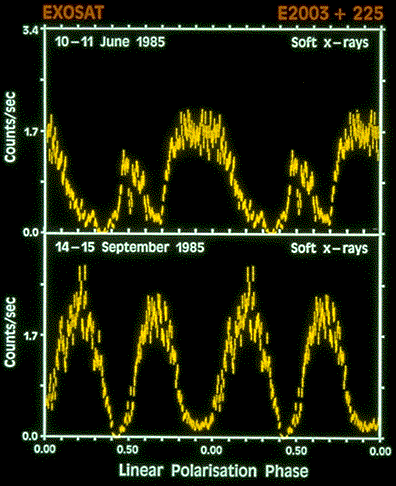EXOSAT light curves of E2003+225
Folded soft X-ray light curves of the AM Her system E2003+223. On top, the usually observed form of the light curve. It is complex and has a total eclipse at phase 0.35 due to the gas stream from the companion passing through the line of sight. Below, in a second observation two months later, the light curve changed completely. It is easily understood that this is due to a single emission region on the rotating white dwarf. The eclipse by the gas stream is again visible, but now shifted to phase 0.4 suggesting a major change in the accretion geometry.
IMAGES |
By Mission |
Stars |
HEASARC Home | Observatories | Archive | Calibration | Software | Tools | Students/Teachers/Public Last modified: Thursday, 26-Jun-2003 13:48:44 EDT HEASARC Staff Scientist Position - Applications are now being accepted for a Staff Scientist with significant experience and interest in the technical aspects of astrophysics research, to work in the High Energy Astrophysics Science Archive Research Center (HEASARC) at NASA Goddard Space Flight Center (GSFC) in Greenbelt, MD. Refer to the AAS Job register for full details. |


